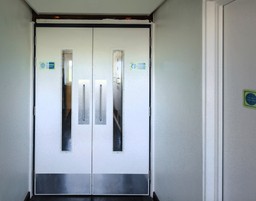Effective Fire Safety in Schools: Protect Students & Staff
Ensuring fire safety in schools is vital for protecting students, staff, and property. Schools are unique environments where a large number of people gather daily, making robust fire safety measures essential. Fires not only risk lives, but can also disrupt education and cause significant financial losses. This guide will walk you through the critical aspects… Continue reading Effective Fire Safety in Schools: Protect Students & Staff
Ensuring fire safety in schools is vital for protecting students, staff, and property. Schools are unique environments where a large number of people gather daily, making robust fire safety measures essential. Fires not only risk lives, but can also disrupt education and cause significant financial losses. This guide will walk you through the critical aspects of fire safety, from risk assessments to evacuation procedures, with insights tailored for educational premises.
Key Takeaways
- Fire Risk Assessments (FRA) are mandatory to identify hazards and implement safety measures.
- Functional fire detection systems and alarms are crucial for delivering early warnings.
- Regular fire drills prepare everyone for emergencies.
- Fire doors and sprinkler systems reduce the spread of fires.
- Proper training ensures staff can act effectively during a fire.
For more insights on education fire safety, visit our Education Sector page.
Fire Risk Assessments
A Fire Risk Assessment (FRA) is the cornerstone of fire safety in schools. It involves identifying potential hazards, assessing risks, and implementing control measures. Schools must:
- Conduct FRAs annually or after significant changes to the building.
- Regularly update their assessments based on new risks.
- Address hazards such as cluttered exits, faulty wiring, or flammable materials.
By staying proactive, schools ensure their safety measures remain effective. For additional guidance, explore our guide to Emergency Response Plans.
Fire Detection and Alarm Systems
Functional fire detection and alarm systems are a legal requirement in schools and play a pivotal role in saving lives. These systems must comply with BS 5839-1 standards. Features to prioritise include:
- Smoke and heat detectors for early fire identification.
- Audible alarms to ensure everyone can hear and respond.
- Integration with sprinkler systems for automatic fire suppression.
Regular maintenance and testing are also essential to ensure reliability.
Integration with Other Safety Measures
Fire detection systems can work seamlessly with other measures, like sprinkler systems, to minimise damage. Sprinklers are especially valuable for new schools and large campuses, as they suppress fires before they spread.
Evacuation Procedures
An effective evacuation plan is non-negotiable for fire safety in educational premises. Every school should:
- Map Out Routes: Clearly marked and obstacle-free evacuation routes are critical.
- Hold Regular Drills: Conduct drills at least once per term to familiarise everyone with the process.
- Include Everyone: Ensure evacuation plans accommodate students and staff with disabilities.
Regular drills ensure swift and orderly evacuations during real emergencies.
The Critical Role of Fire Doors
Fire doors are a first line of defence against the spread of fire and smoke, buying time for evacuation. Key benefits include:
- Containing fire as much as possible to its point of origin.
- Protecting evacuation routes.
- Reducing overall damage to the building.
Schools must ensure their fire doors are compliant with industry standards and undergo regular inspections.
Arson Prevention
Arson accounts for a significant percentage of fires in schools. Preventive measures include:
- Installing security cameras and motion-sensitive lights.
- Securing all entry points to the premises.
- Removing external flammable materials like bins and debris.
These steps reduce opportunities for unauthorised access and malicious intent.
Electrical Safety
Faulty electrical equipment is a common cause of fires in schools. To minimise risks, schools should:
- Conduct Portable Appliance Testing (PAT) annually.
- Replace damaged cables and plugs immediately.
- Avoid overloading circuits and outlets.
Training staff to recognise early signs of electrical issues, such as overheating or flickering lights, can further prevent fire incidents.
Training Staff and Fire Marshals
Comprehensive training ensures all school staff are prepared to act during a fire. Key components of training include:
- Recognising fire hazards.
- Understanding evacuation protocols.
- Learning how to use fire extinguishers effectively.
Note that designated fire marshals require more extensive training to coordinate evacuations and liaise with emergency services.
Designing Fire-Safe School Buildings
New schools should follow Building Bulletin 100 (BB100), which provides guidelines for fire-safe construction. These guidelines recommend:
- Using fire-resistant materials.
- Ensuring ample spacing for safe evacuations.
- Installing integrated safety systems like sprinklers and alarms.
Designing with fire safety in mind reduces the long-term risk of incidents.
Proper Use and Maintenance of Fire Extinguishers
Fire extinguishers are essential tools for handling small fires. Schools should:
- Provide the right extinguishers for different types of fires (e.g., foam, CO₂).
- Train staff to avoid misuse.
- Regularly inspect and replace extinguishers as needed.
Ensure extinguishers are always accessible and clearly marked.
Building a Culture of Fire Safety
Effective fire safety in schools requires a culture of vigilance. Encourage students and staff to report hazards and follow safety rules consistently. By fostering awareness, schools can create safer environments for everyone.
At Gerda Security, we are committed to enhancing fire safety in educational premises. From industry-leading fire doorsets to advanced Premises Information Boxes, our solutions meet the highest safety standards. Visit our case studies to learn how we’ve helped various different institutions achieve excellence in fire safety.
Frequently Asked Questions
How often should schools update Fire Risk Assessments?
At least once a year, or after significant changes to the building or use of facilities.
Are sprinkler systems required in all schools?
While not mandatory, sprinklers are strongly recommended for new schools and large campuses.
What training should school staff receive?
Basic fire safety training for all staff, and advanced training for fire marshals.
What are the most common causes of school fires?
Arson, electrical faults, and kitchen fires are the leading causes.
Can fire doors be left open for convenience?
No, fire doors must remain closed to function effectively.


